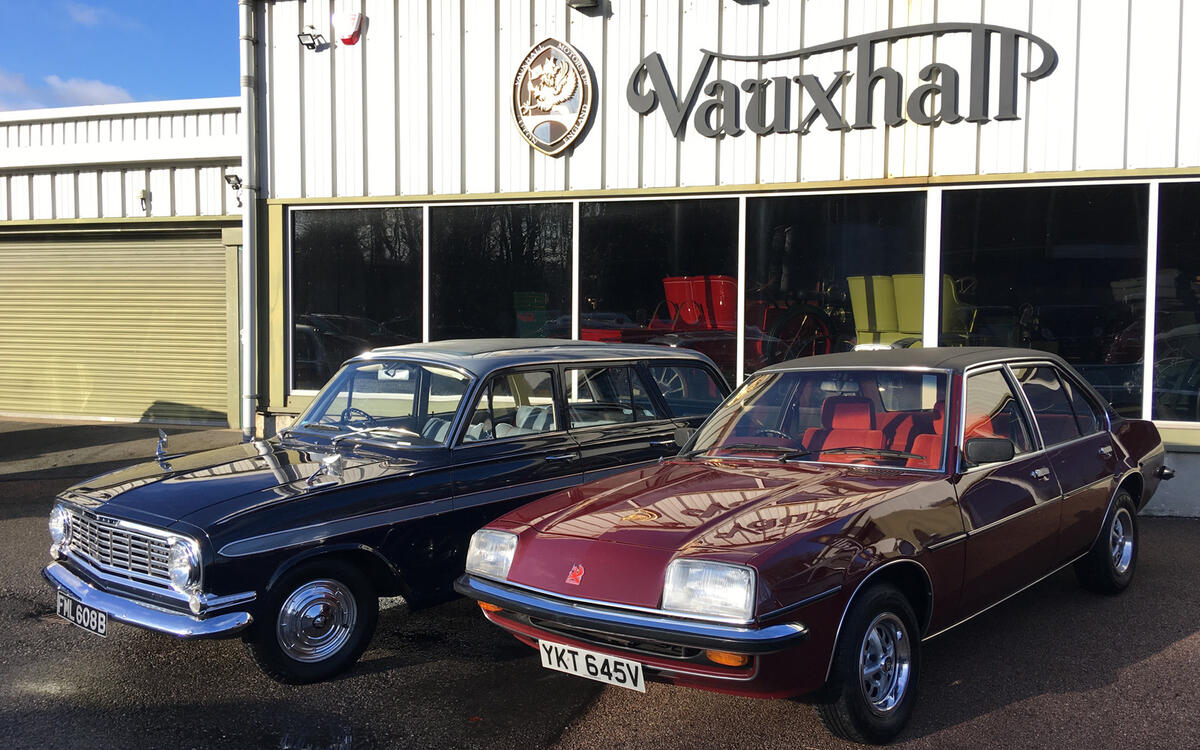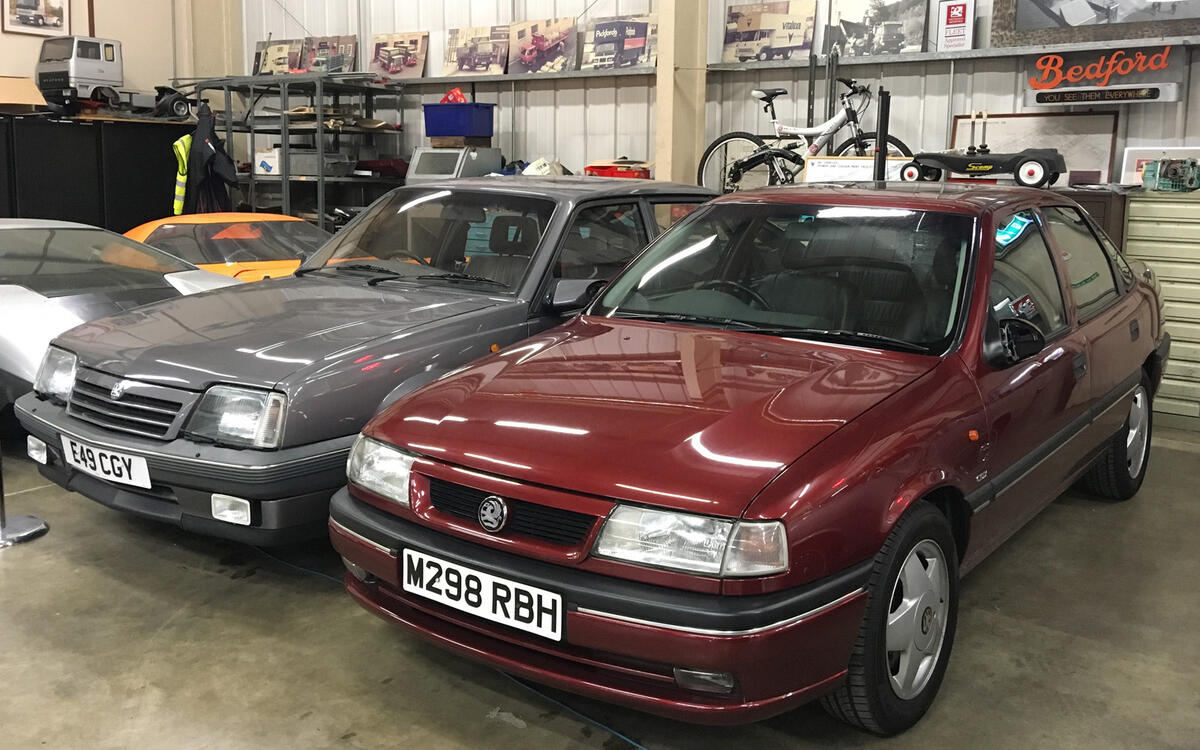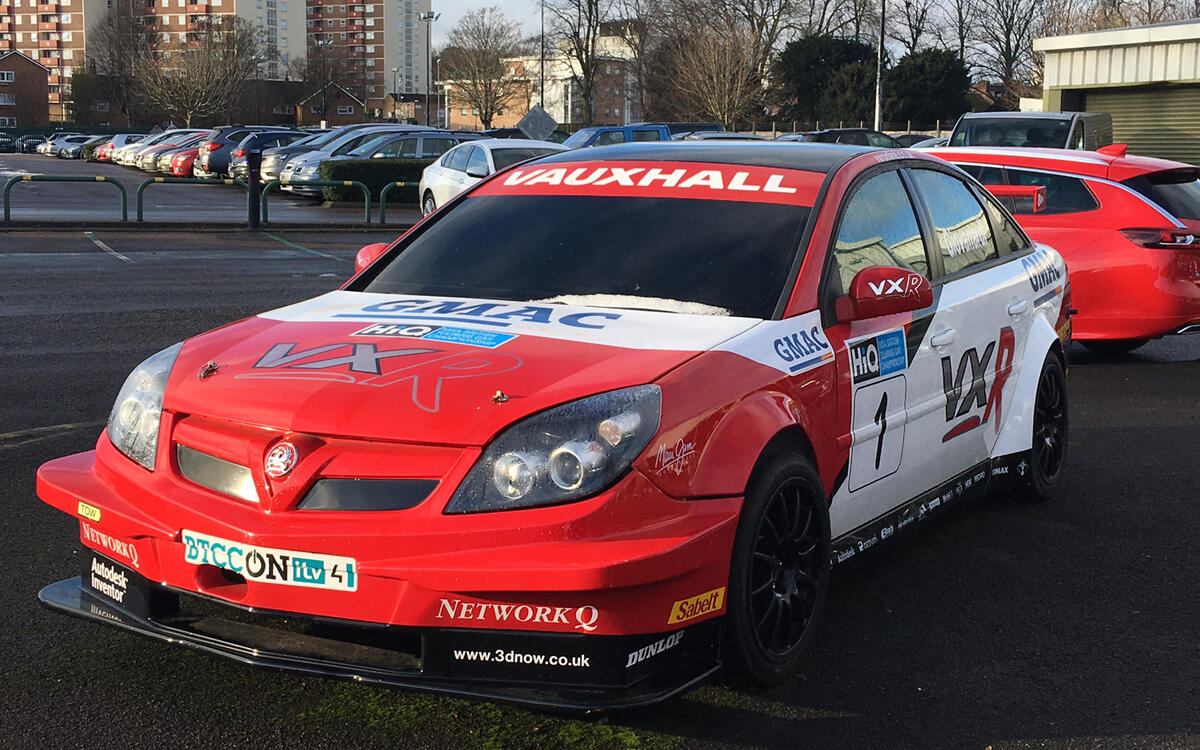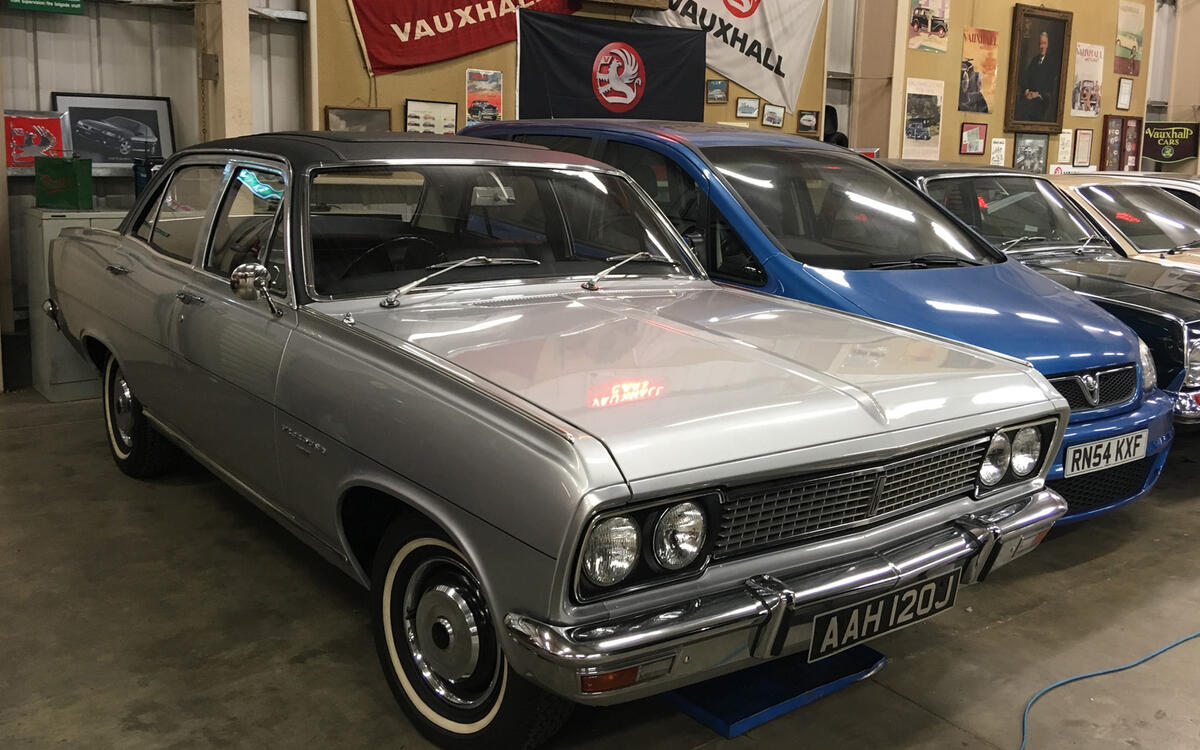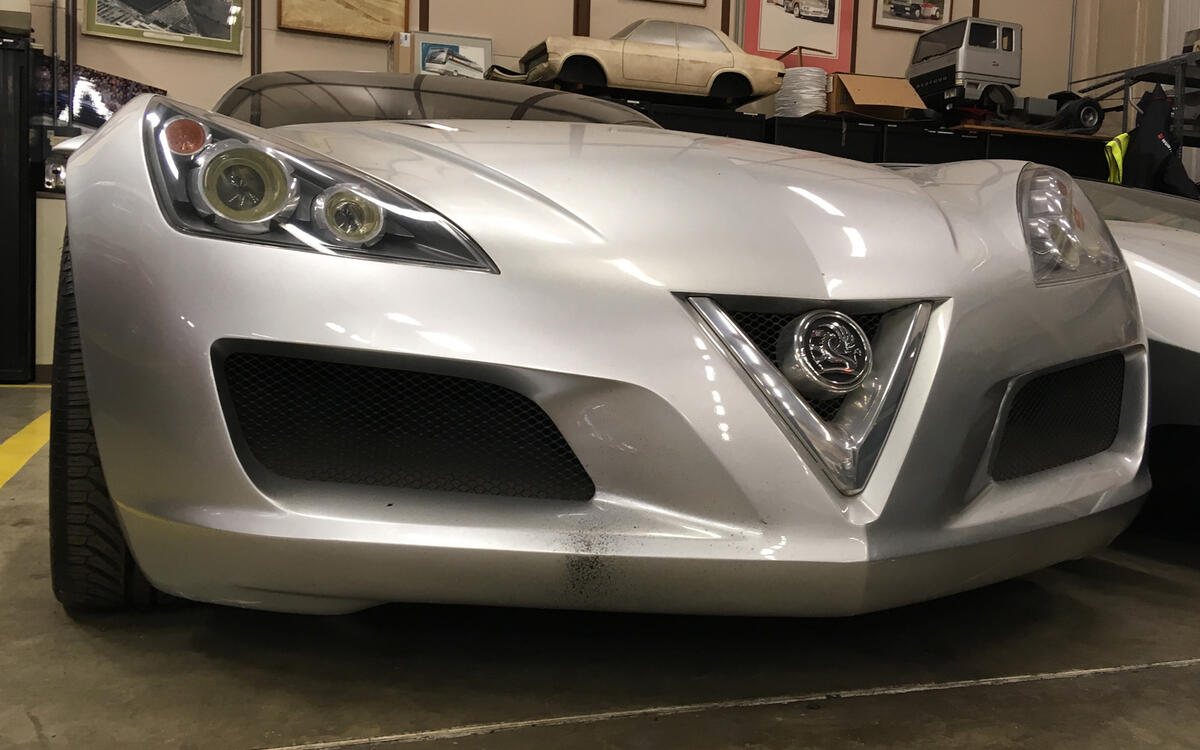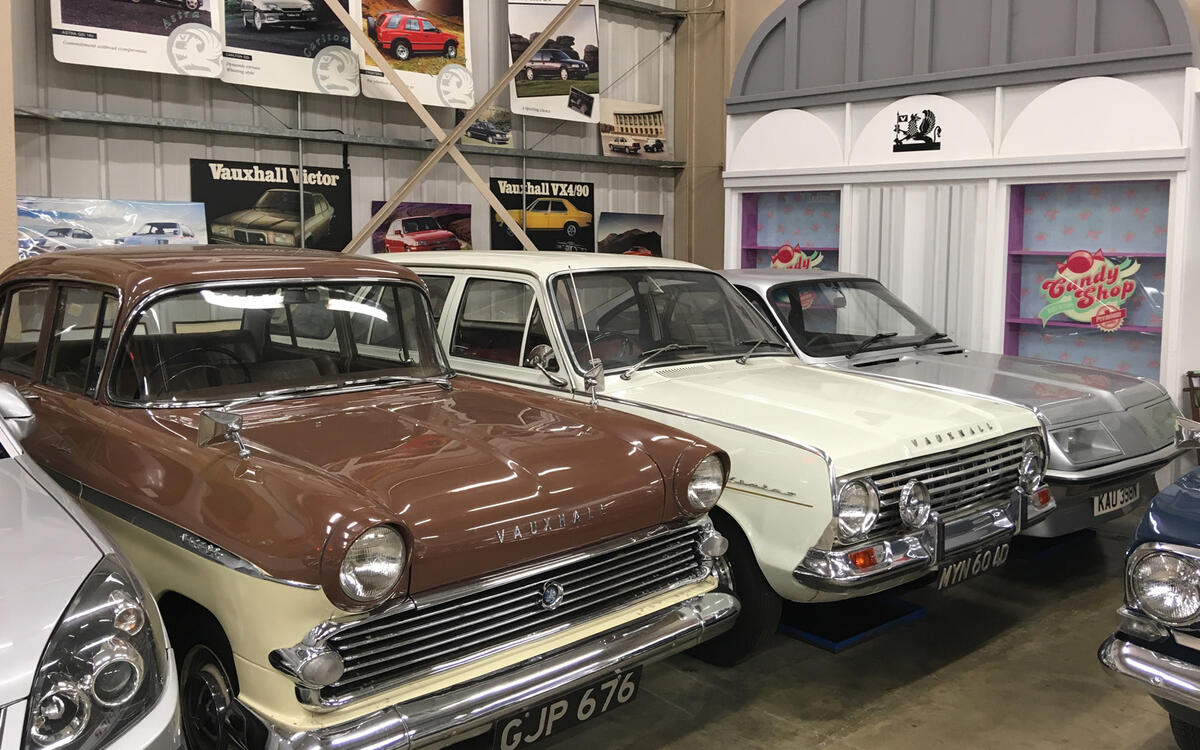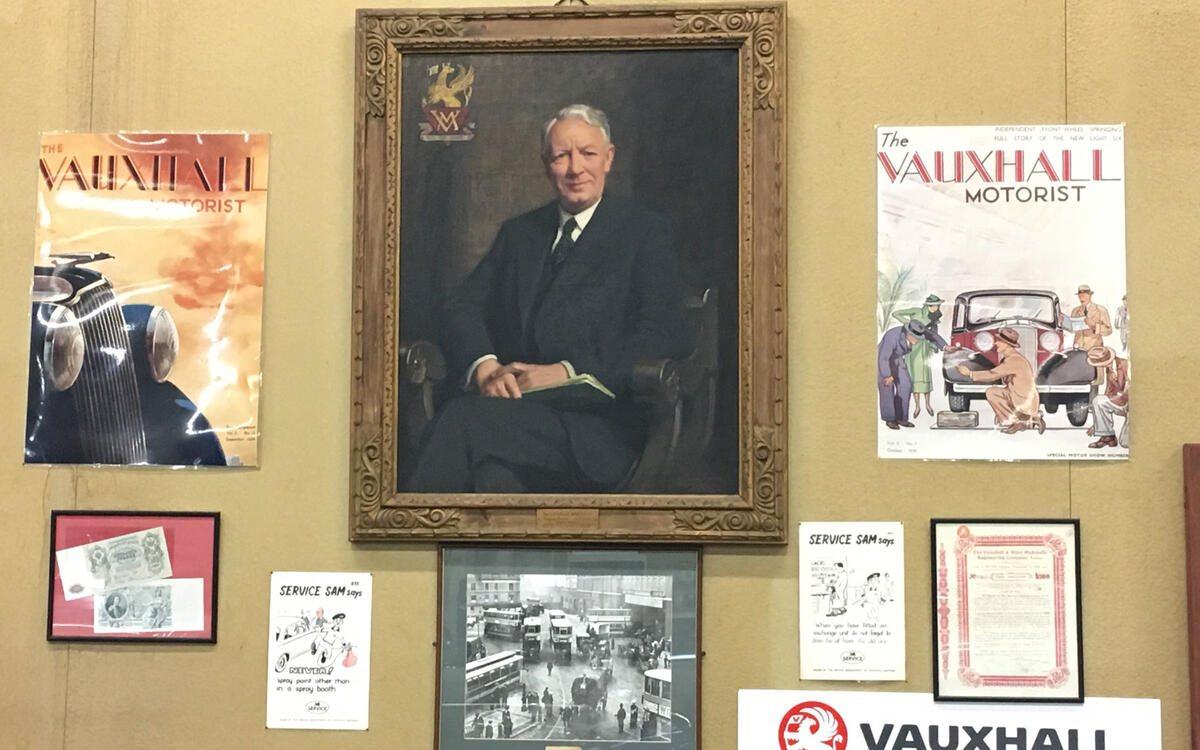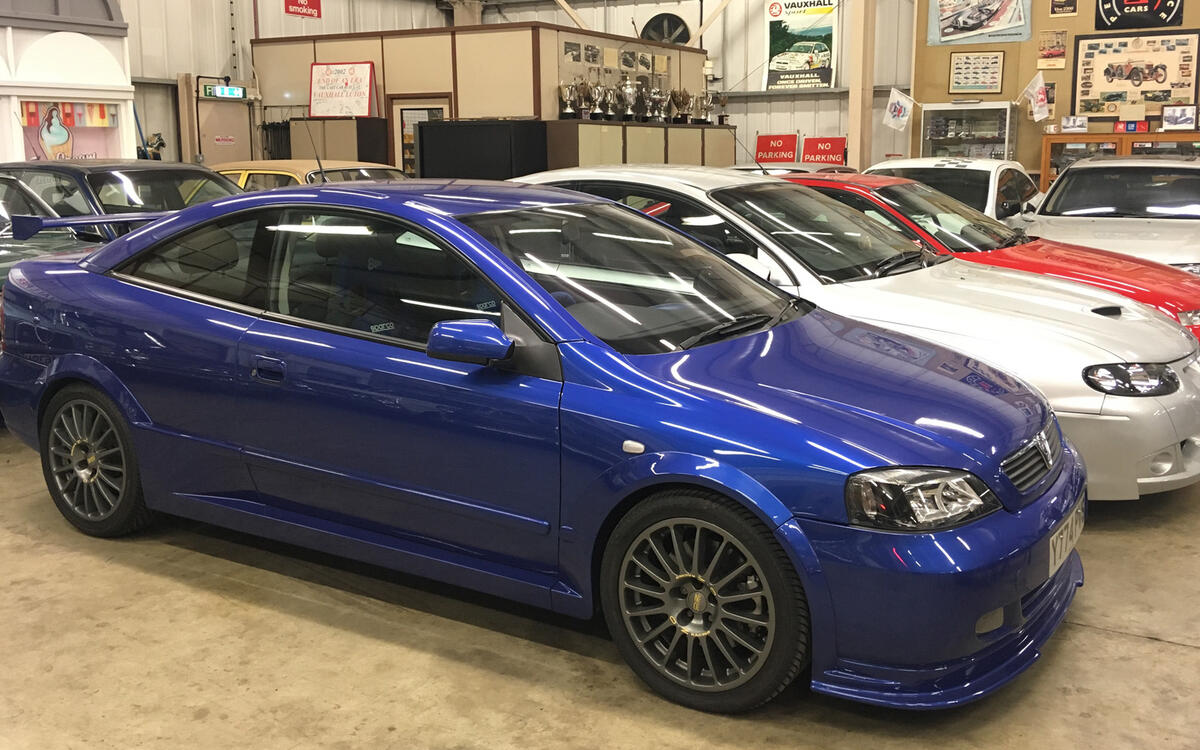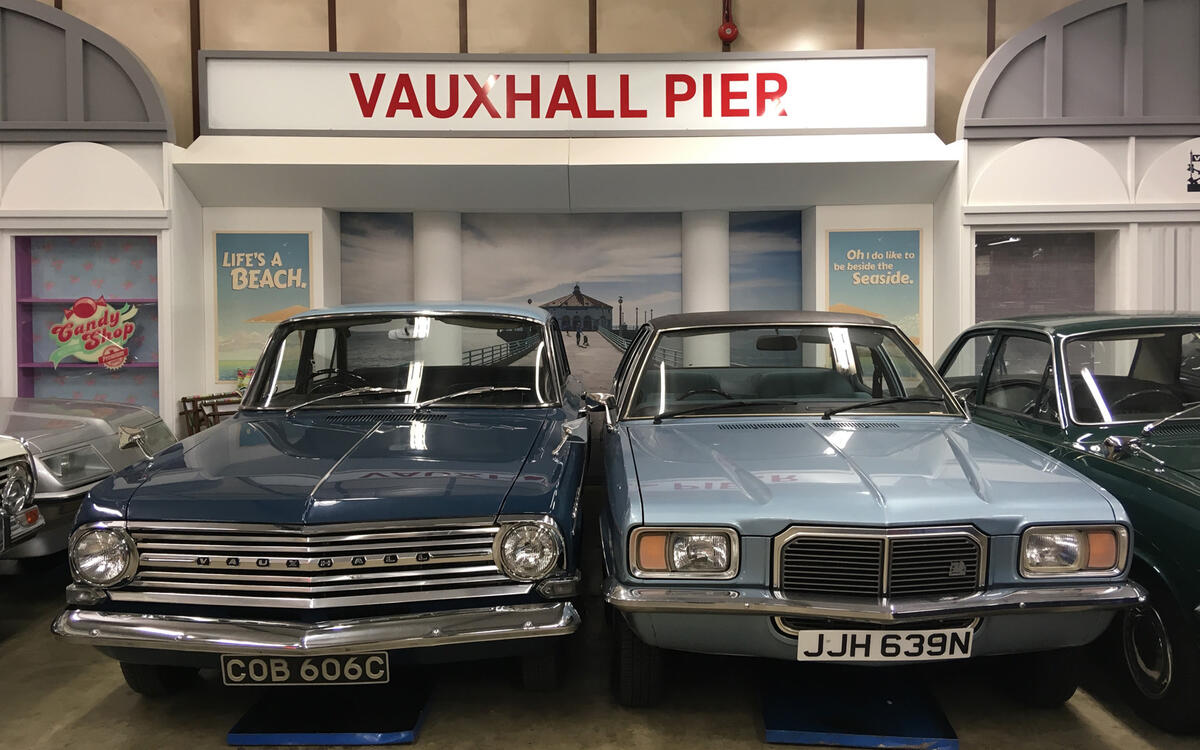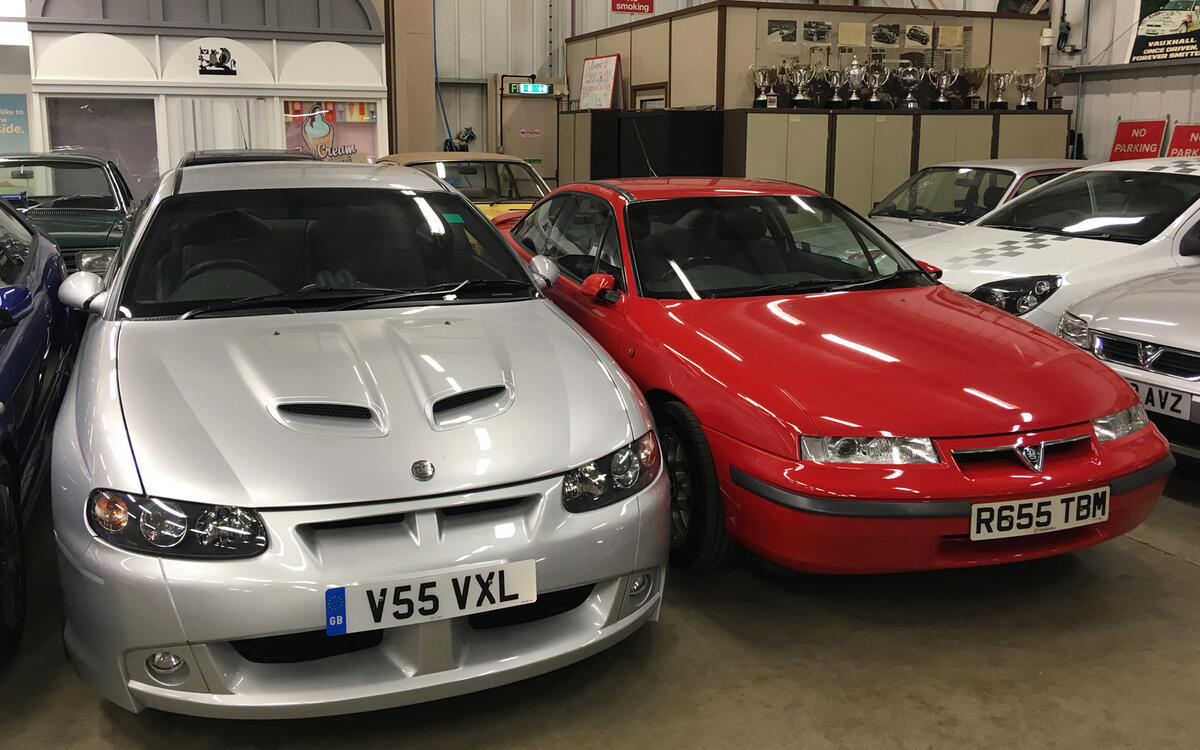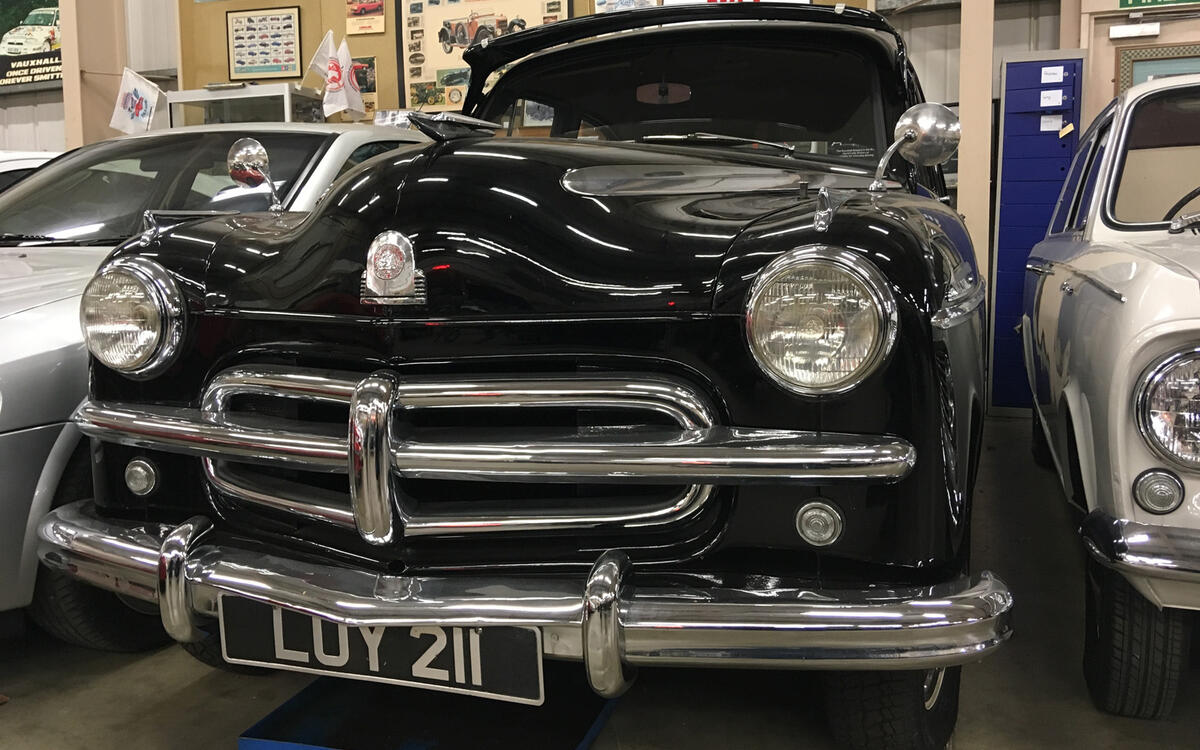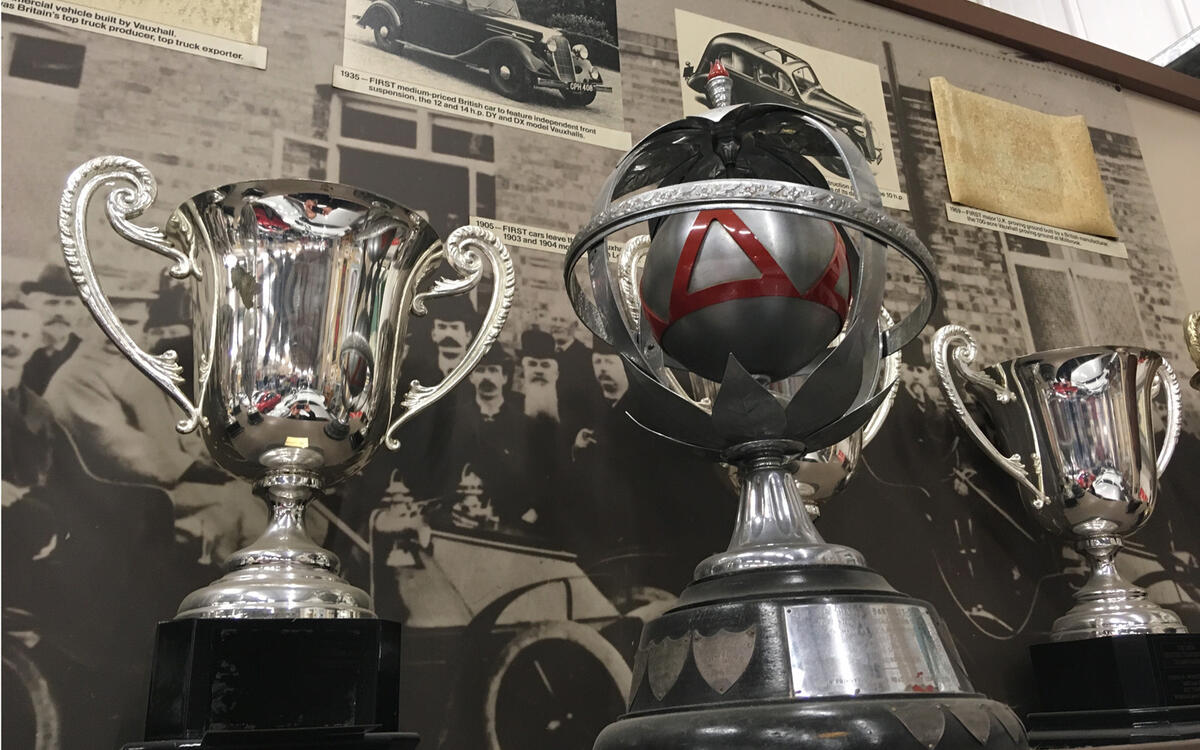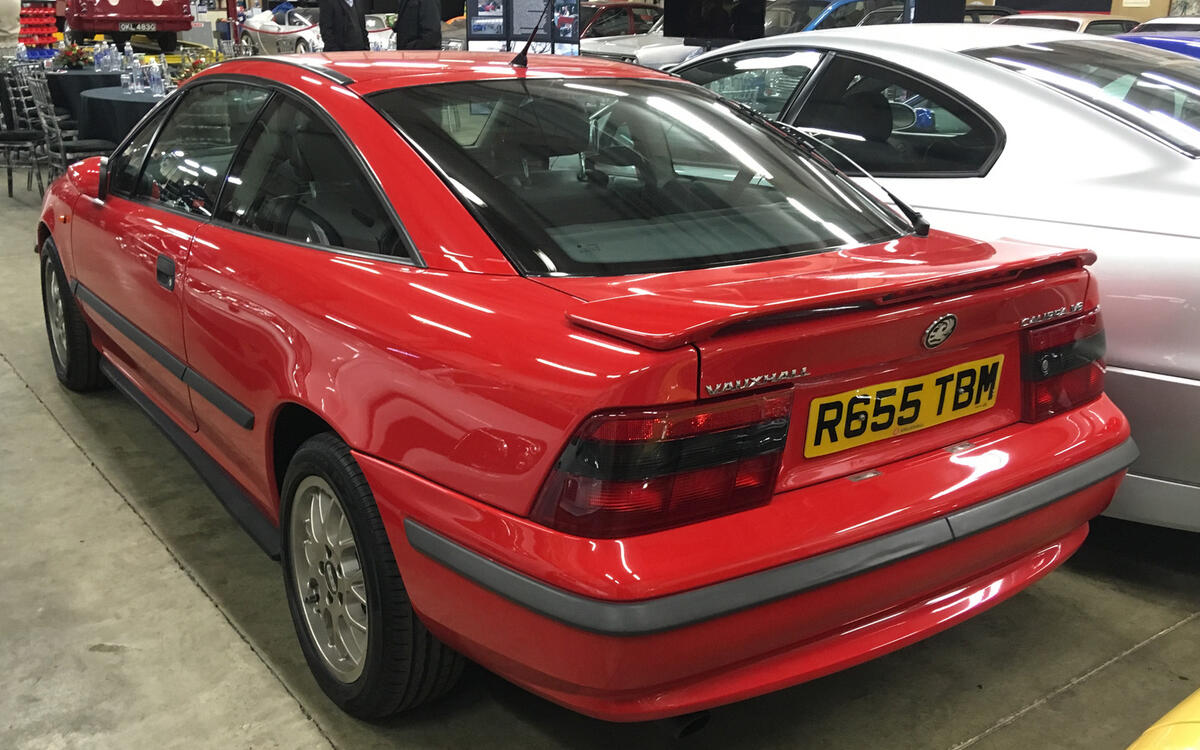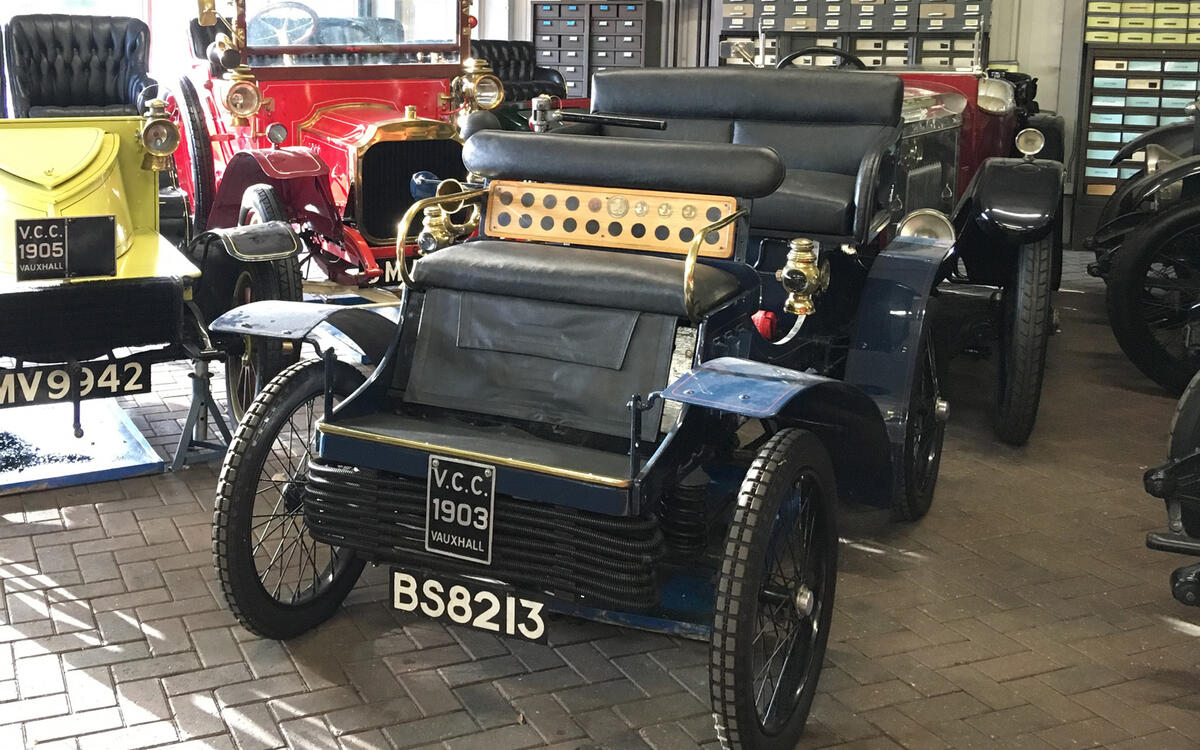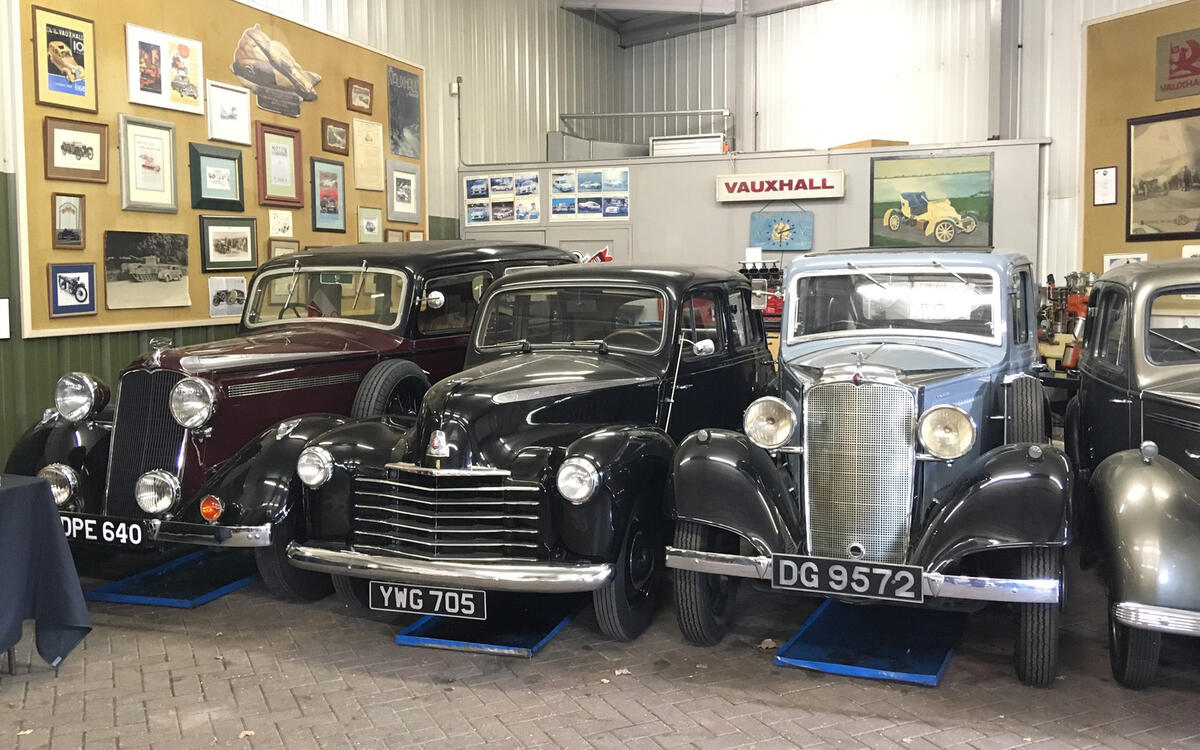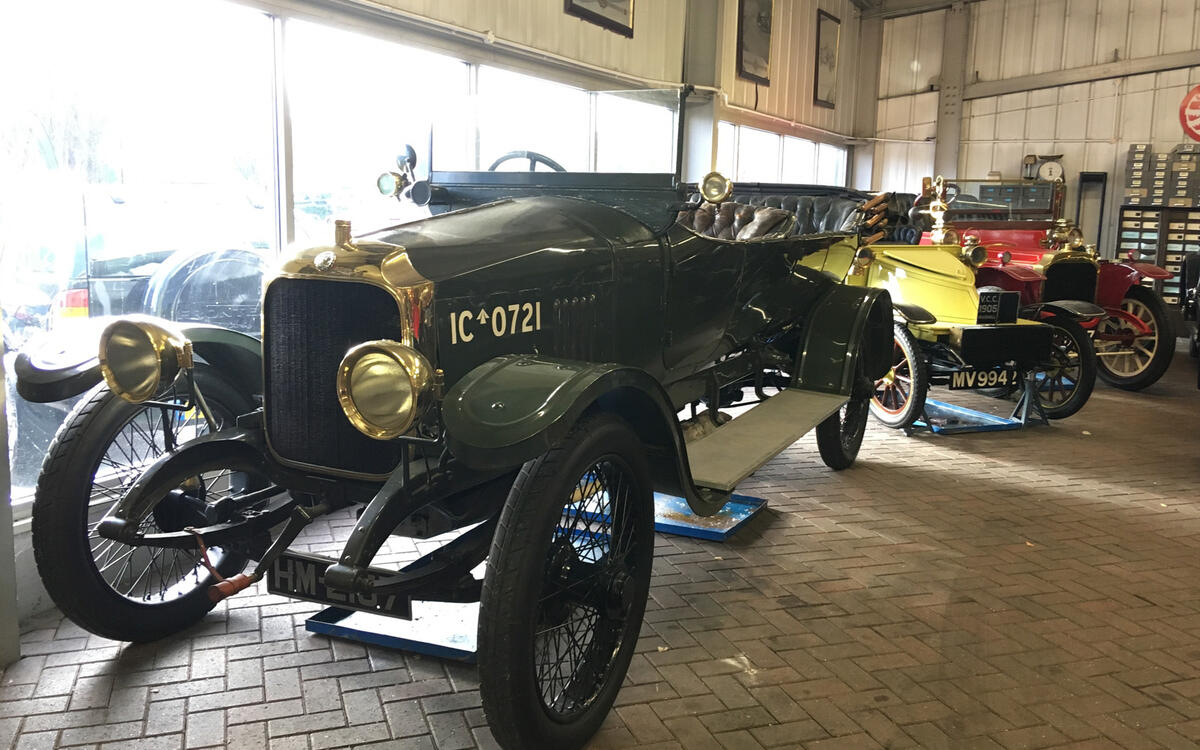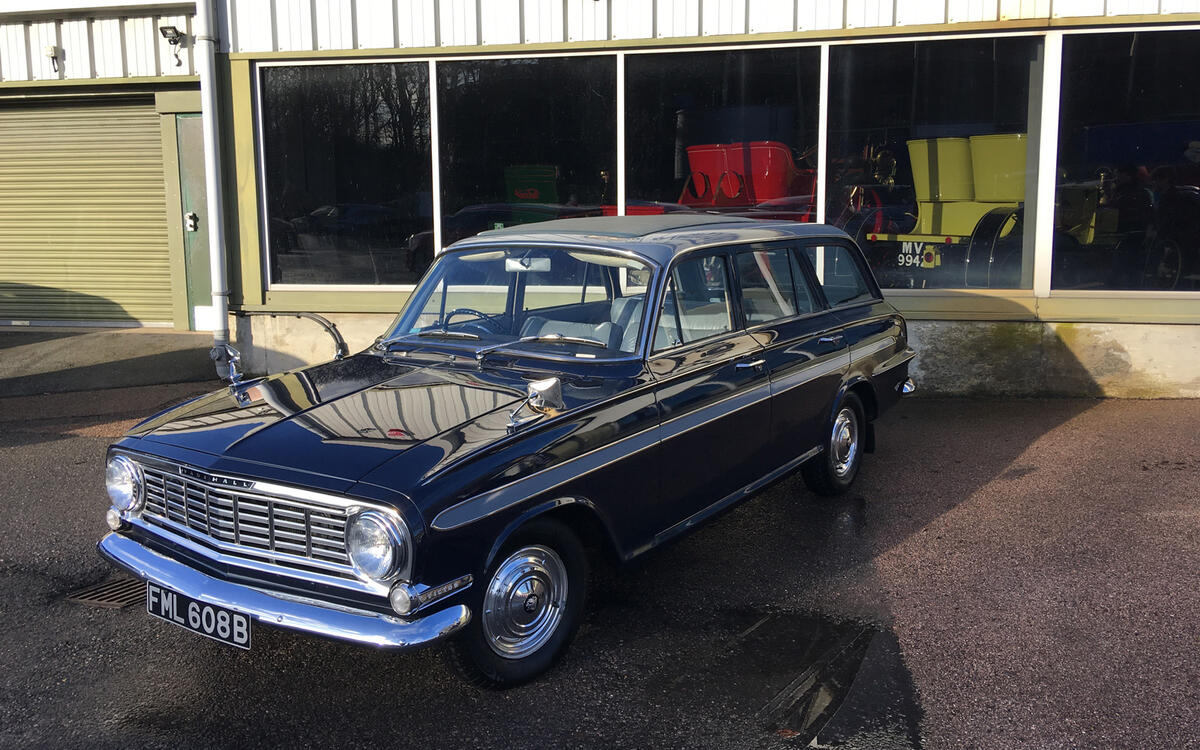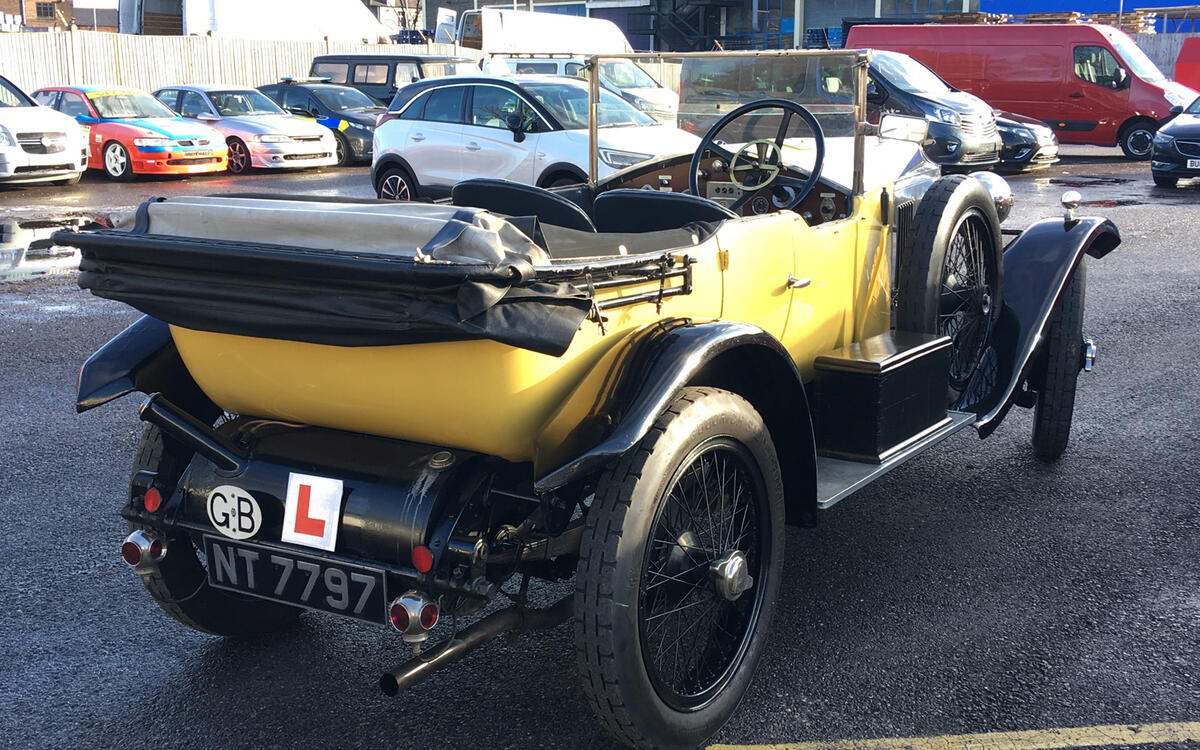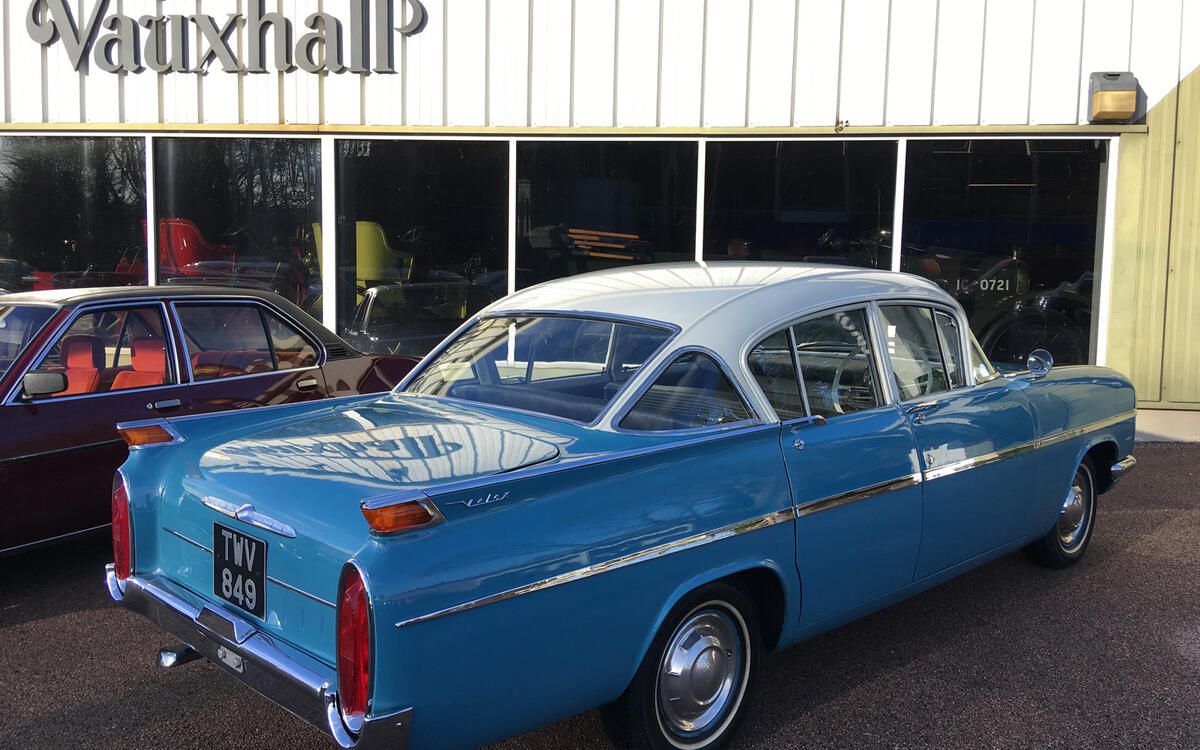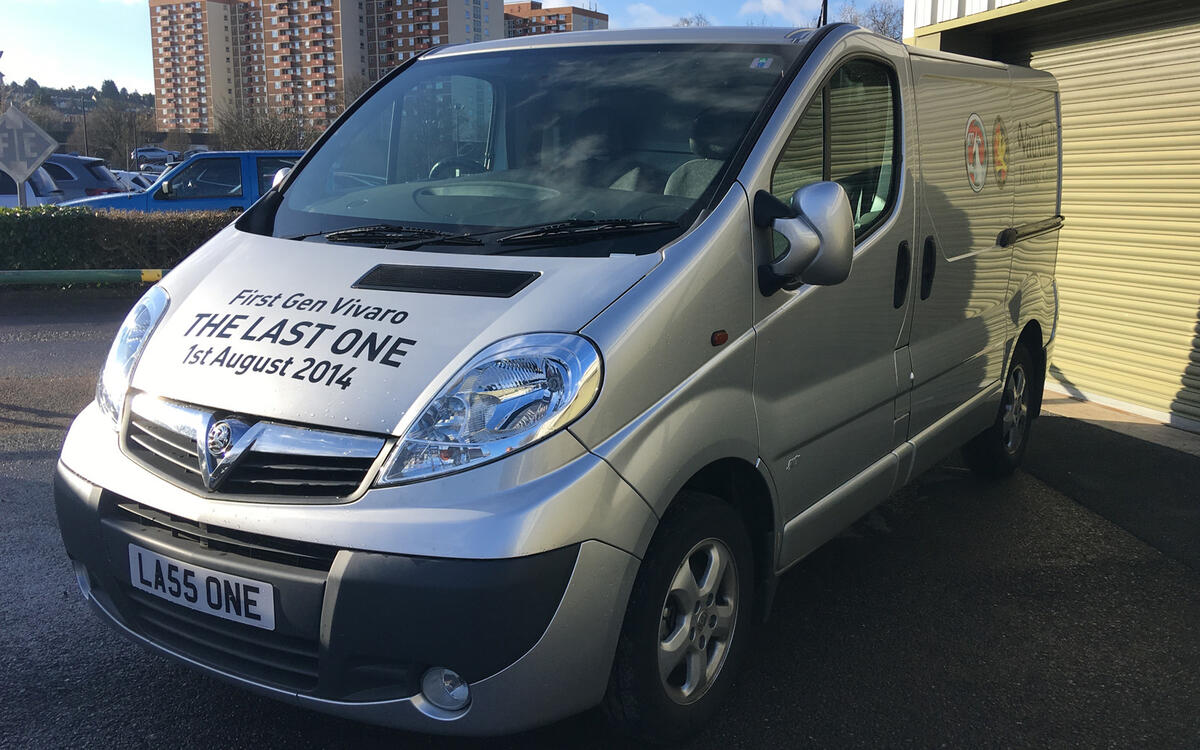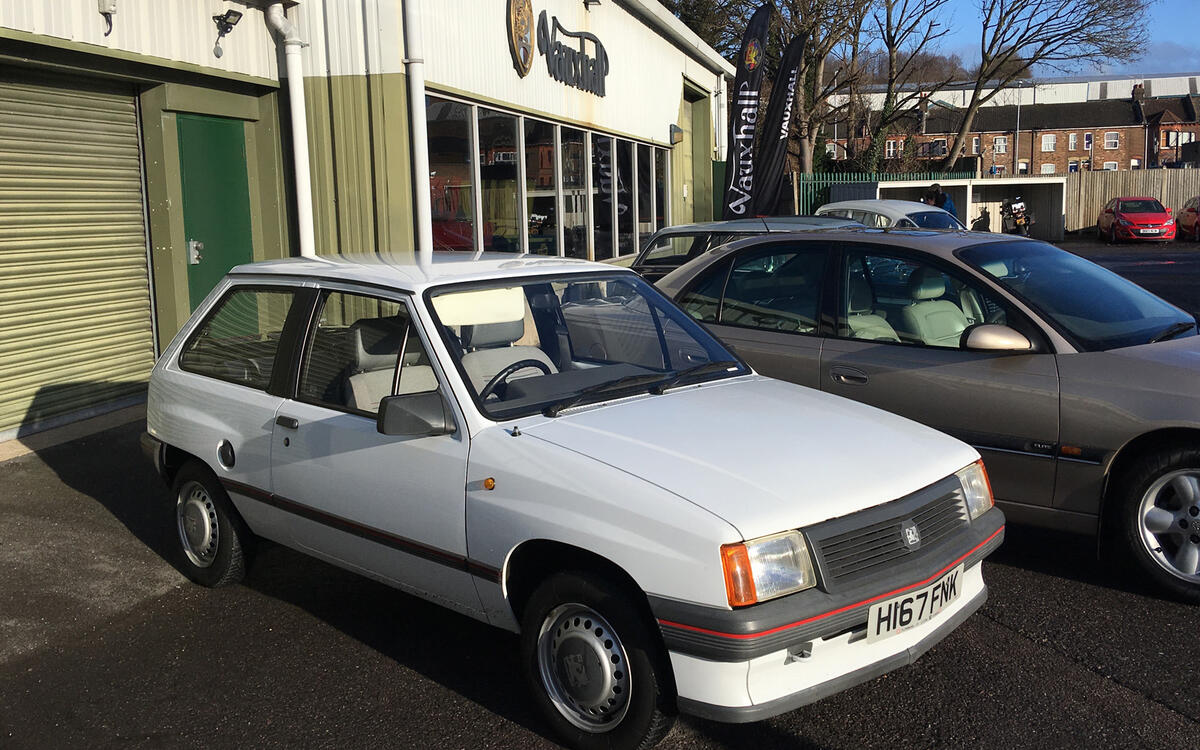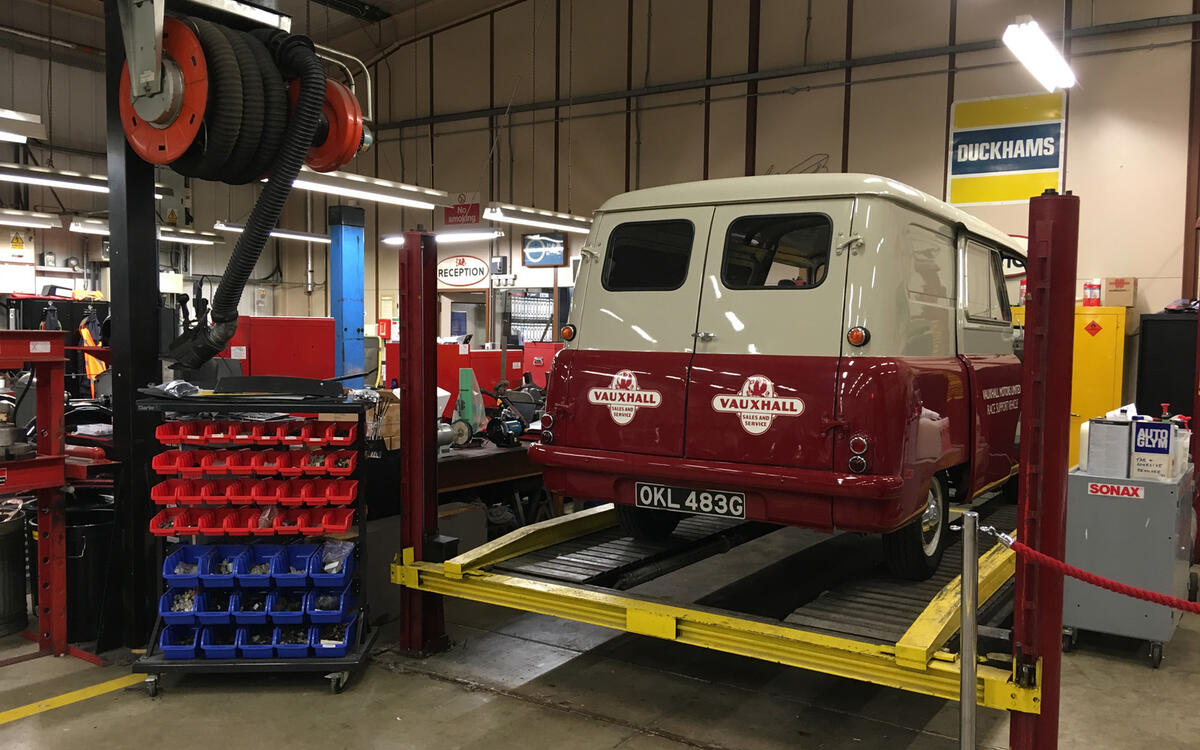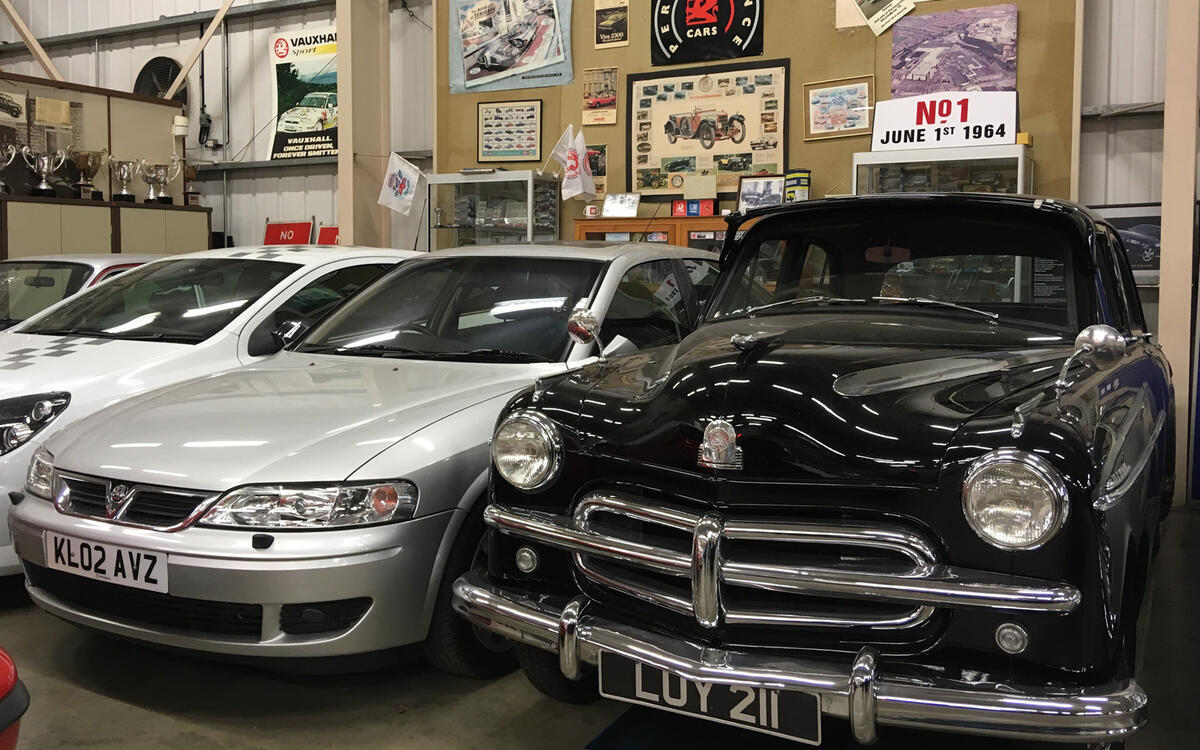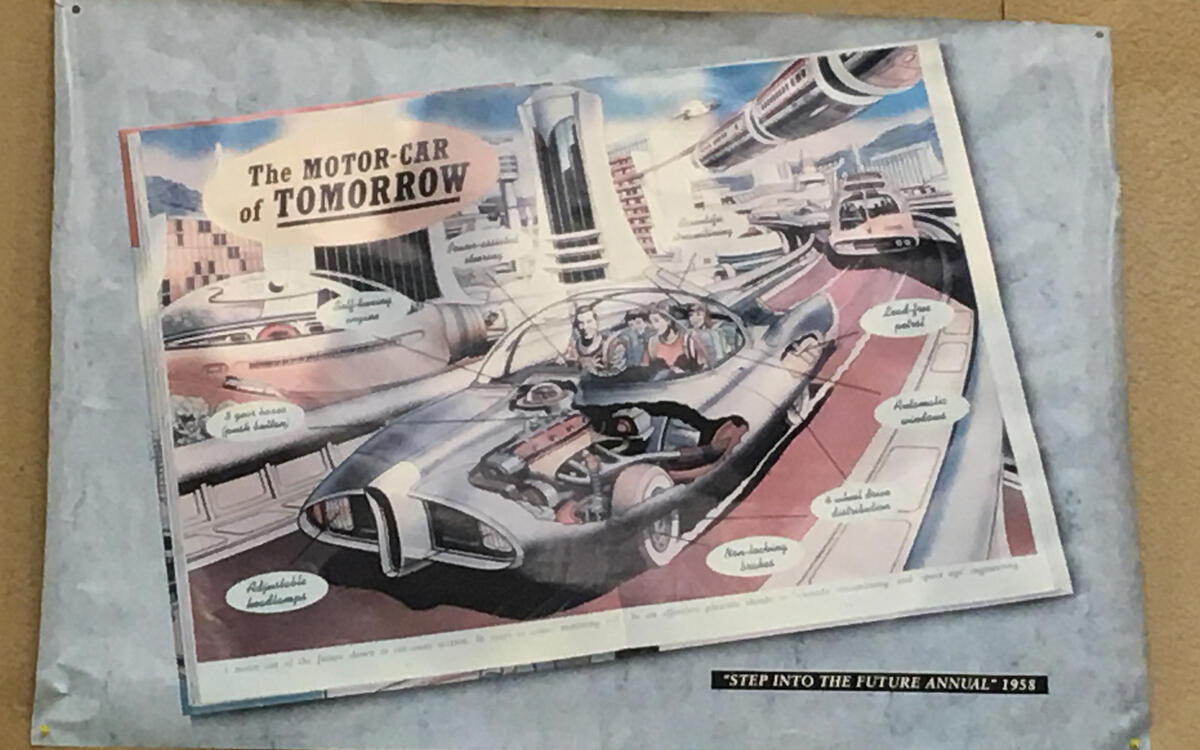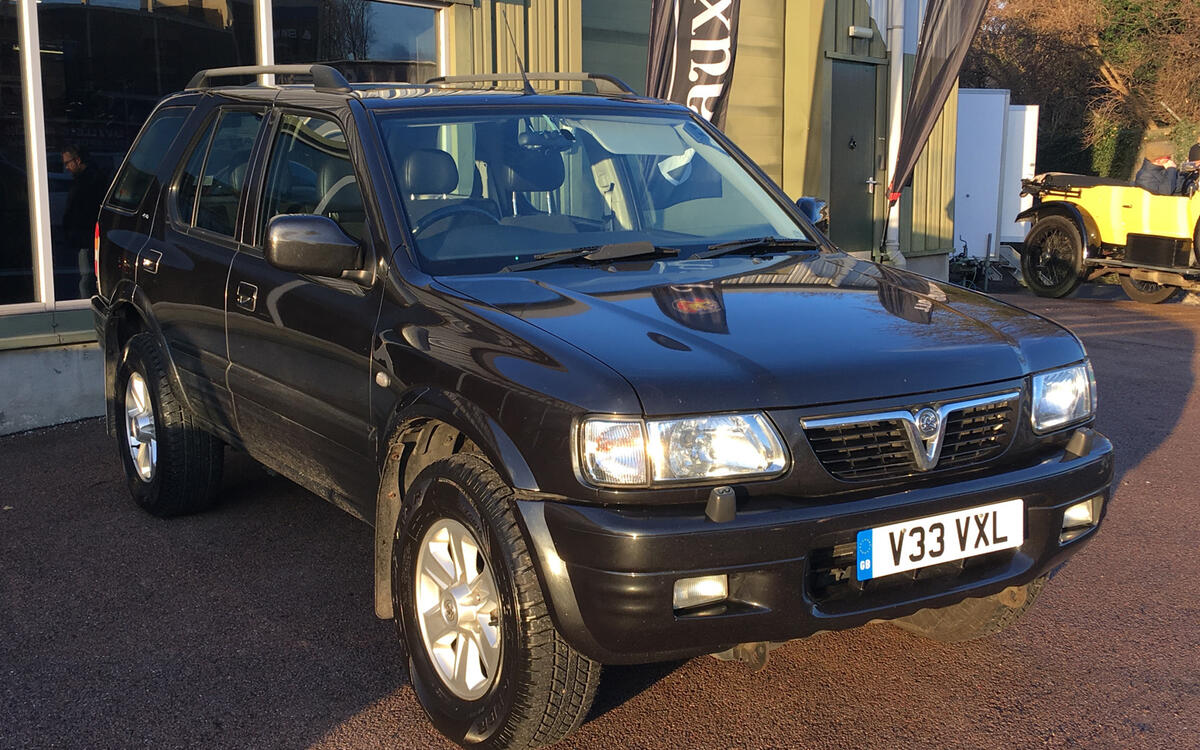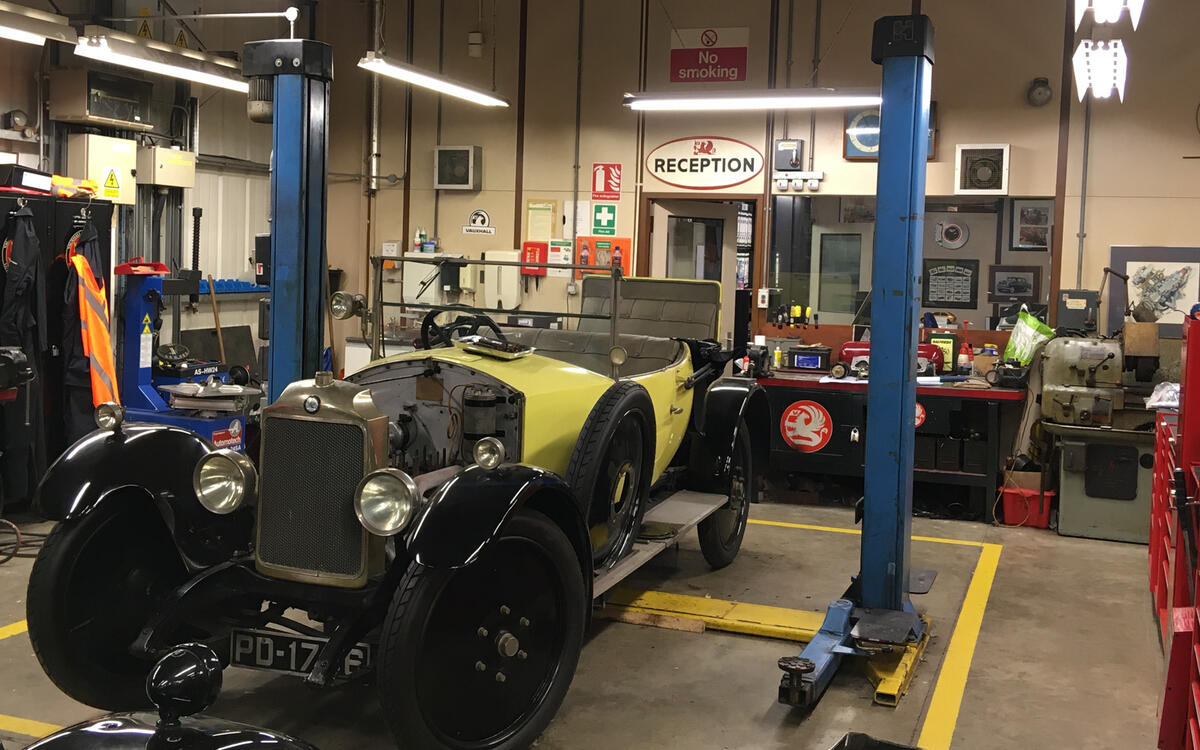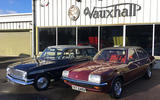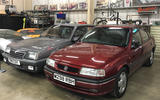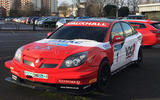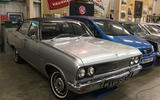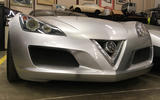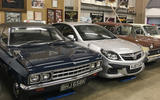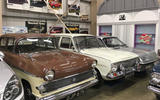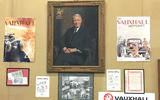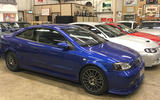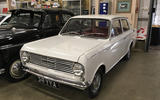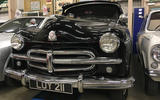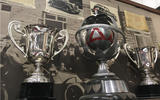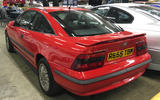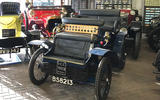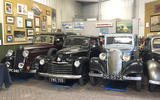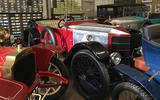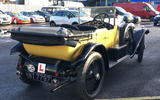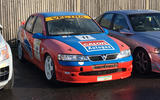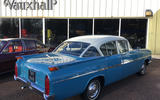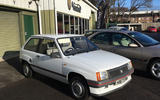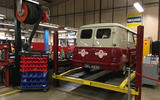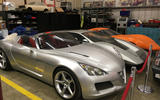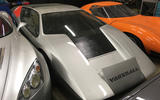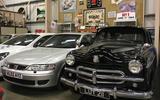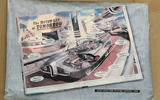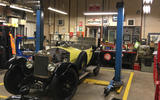 Slide of
Slide of
Vauxhall Heritage Centre
It's been a significant year for Vauxhall, with the storied British firm being sold by GM to the French PSA Group, along with sister firm Opel. PSA bosses have pledged to make a success of its newly acquired brands, which means that Vauxhall is set to add to a rich 114-year history.
That history is on full display in the workshop of the Vauxhall Heritage Centre, located at the firm's Luton headquarters. A small team work wonders to maintain more than 70 cars that span from Vauxhall's origins in 1903 to the present day. The facility isn't a museum: although the cars maintained there are often loaned to such instititions. But it is still packed with history so, on a recent visit, we took a good look around.
Pictured left is a 1964 FB Victory De-Luxe estate, featuring a four-cylinder 1594cc engine. The FB Victor range launched in 1961 in saloon and estate versions. Three-speed column changer was standard; four-speed floor change was an option. On the right is a Mk1 Cavalier from 1980. The first Cavalier was launched in 1975, and built initially in Belgium, with production starting at Luton in 1977. This is a GLS 2000 four-door saloon version, which was added to the range in 1979.
 Slide of
Slide of
Vauxhall Cavalier Mk2 (1987) and Cavalier Mk3 (1995)
The Cavalier was a key part from launch in 1975 until it was replaced by the Vectra in late 1995. The Cavalier Mk2 (left) was produced from 1982 until 1988, initially with an 1800cc engine. This is a later-spec CDi model, which features a 2000cc engine fitted with a Bosch engine management system and computer-controlled fuel injection.
The Heritage Centre's Mk3 Cavalier (right) is a face-lifted example dating from 1995. It features a 2.5-litre V6 engine, and was originally used as a press demonstrator.
 Slide of
Slide of
Vauxhall Vectra touring car (2009)
Vauxhall has a rich history in the British Touring Car Championship, having racked up 134 race wins (a figure bested only by Ford and Honda). This Vectra was campaigned by Fabrizio Giovanardi in the 2009 season. The Italian used one of the Triple Eight Racing-run machines to claim back-to-back titles in 2007 and '08.
 Slide of
Slide of
Vauxhall PC Viscount (1971)
The Viscount was Vauxhall's luxury version of the Cresta, featuring such luxurious additions as a fabric-covered roof, electric windows and a walnut-veneer dash. The big saloon was powered by a 120hp, 3.3-litre, six cylinder engine. When launched, it had an official 0-60mph time of 15.5 seconds. And, yes, it is parked next to a 2004 Zafira...
 Slide of
Slide of
Vauxhall VX Lightning (2003)
This concept was made to celebrate 100 years of Vauxhall car production, and was a join project between GM designers and Advanced Design Studio. It was based on the 2002 Pontiac Solstice concept car, and powered by a supercharged 2.2-litre four-cylinder engine that produced 240bhp.
 Slide of
Slide of
Vauxhall FD Ventora (1971)
Currently parked next to a Vectra, this Series 2 FD Ventora dates from 1971 and features options such as a three-speed automatic transmission, power steering and radial tyes. The Ventora featured the bodyshell from the FD Victor, but ued the 3.3-litre six-cylinder engine used in the PC Cresta.
 Slide of
Slide of
Vauxhall F-type Victor (1961), FC Victor Estate 101 Deluxe (1966) and Firenza HPF Droop Snoot (1975)
Launched in 1957, 390,745 F-type Victor were built in five years, and it was Britain's top export car in the period. The version in the collection features a 15088cc, four-cylinder engine. In 1958, a two-pedal variant, that featured a Newtondrive clutchless gear change was launched. The FC Victor, launched in 1964, was a major departure from the previous model in terms of styling, but shared many of the mechanical components.
Nestled in the corner, and largely hidden by the two Victors, is a Firenza HPF Droop Snooth, one of just 204 built. The coupe featured a 2.30litre slant four engine that could produce 131bhp, giving the car a top speed of more than 120mph and a 0-60mph time of 7.5 seconds. Standard-fit options of the HPF included a five-speed ZF gearbox, 10-inch disc brakes on the front and 9-inch drum brakes on the back wheels.
 Slide of
Slide of
Sir Charles Bartlett
The distinguished looking gentleman in this painting, which hangs on the walls of the Heritage Centre, is Sir Charles Bartlett. Having started as a book-keeper with GM's British subsidiary in 1921, Bartlett rose to became its managing director five years later. When GM acquired Vauxhall in 1925, he took the same role with Vauxhall, and remained in post until 1954. He was knighted in 1944, in recognition of his and Vauxhall's efforts during World War Two.
 Slide of
Slide of
Vauxhall Astra 888 Coupe (2000)
This is one of 100 Astra built by Triple Eight Racing, which ran Vauxhall's British Touring Car Championship outfit during the period. It was made to celebrate Vauxhall's domination of the 2001 BTCC season with the racing version of the Astra Coupe: the car won 25 out of 26 races, with Vauxhall drivers filling the top four spots in the points table. Jason Plato edged team-mate Yvan Muller to take that year's title.
The Astra 888 Coupe features the same 2.0-litre turbo engine that was available in the Astra Coupe, but was fitted with Eibach springs and dampers, and 17-inch Oz Racing alloy wheels.
 Slide of
Slide of
Vauxhall PB Cresta (1965) and FE Victor 2300S (1975)
The PB was built between October 1962 and October 1965, and this is one of the most luxurious Cresta variants. This version features an automatic gearbox driving the 3.3-litre engine; it was also available with three- or four-speed manual boxes.
On the right is an FE Victor, the final version of the Victor that was launched in 1972. The FE models were offered in 1800 or 2300 form, and the range also featured a twin-carburettor VX 4/90 and a luxurious Ventora with a 3.3-litre engine. In 1976, the year after the 2300S shown was built, Vauxhall launched the VX series of cars, which took the bodyshells of the FE Victor and Ventora models, the Victor name being discontinued after nearly 20 years.
 Slide of
Slide of
Vauxhall VXR 500 (2007) and Calibra SE9 2.5 V6 24v (1997)
Well, we say VXR 500, but let's call this what it really is: a Holden Monaro. Various versions of the model were imported from GM's Australian operation over the years, and rebranded as Vauxhall models - thankfully they retained much of their simple Australian pleasures. This Monaro/VXR 500 featured a 6.0-litre engine, supercharged to produce around 500bhp through a six-speed gearbox with limited slip differential. It also features traction control, which is quite useful given the hefty beast could do 0-60mph in six seconds. Strewth, etc.
The Calibra is a Vauxhall performance car with more of a German accent: it was built at Opel's Russelheim factory in Germany (and also under licence by Saab in Finland). This ex-press fleet car is powered by a 2.5-litre V6. Notably the Calibra was the most aerodynamic production coupe available when launched in June 1990.
 Slide of
Slide of
Vauxhall Viva (1963)
Now revived as the name of Vauxhall's current city car, the Viva was originally produced between 1963 and '79, in three different versions. This is one of the original variants, which when launched was Vauxhall's first true compact car since the end of the Second World War. It was powered by a 1057cc engine, and only offered in two-door saloon form.
 Slide of
Slide of
Vauxhall E-type Wyvern (1953)
The E-type Wyvern was launched in 1951, featuring a curved windscreen and side-opening bonnet that gave access to the 15077cc four-cylinder engine. In 1953, during the production run of the E-type, Vauxhall output topped 100,000 vehicles a year for the first time – and, 50 years since it started making cars, the firm produced its millionth vehicle.
 Slide of
Slide of
Tucked on the top of shelving behind some of the cars are a collection of trophies from Vauxhall's motorsport programmes, including a number for various British Touring Car Championship race wins. Not all the trophies were won by Vauxhall though: the distinctive one with a metal ball in the middle decorated with red triangles is the Sir Charles Bartlett Trophy. It used to be given to the winner of a road safety competition held between primary schools in Luton.
 Slide of
Slide of
Vauxhall Calibra SE9 2.5 V6 24v (1997)
From the rear, the aerodynamic profile of the Vauxhall Calibra is clear. The model was produced from June 1990 until 1997, with a total production run of 238,647 across Europe.
 Slide of
Slide of
Vauxhall 5hp, single-cylinder (1903)
This is the oldest car in the collection, and the oldest original four-seater Vauxhall in existence. The 45th car built by the Vauxhall Ironworks in 1903, it's powered through the rear wheels by a water-cooled, single-cylinder engine. It produces 5hp, which is harnessed through an epicycle gearbox and chain drive, giving it a top speed of 20mph.
This car was originally bought by a shipbuilder from Leven in Dunbartonshire in 1903, with Vauxhall buying it in 1995, before a year-long restoration. Its first official outing as a Heritage Centre vehicle was on the 1996 London to Brighton Veteran Car Run, a journey it has completed regularly since.
 Slide of
Slide of
Vauxhall BXL Limousine (1936), L Types (1949) and ASY Light Six (1934)
Vauxhall had been owned by General Motors for nine years when it launched the BXL Limousine (left) in 1934, and the Chevrolet-style design touches on the car show the growing influence of its American owners. The BXL also featured several innovations, including a foot-operated pedomatic starter, automatic chassis lubrication and self-cancelling trafficators.
The L Type (centre) is the only left-hand drive car in the Heritage Centre collection. The lightweight, unitary construction Wyvern was produced in response to the post-War Government's 'Export or Die' drive, which required car makers to send half of their production oversears. This particular car was exported to Portugal, but worked its way into the collection of a Vauxhall enthusiast in Holland. When he decided it was time to give the car to the Heritage Collection, the collector and his wife took one final road trip in it, driving it from their home to Luton.
On the right is an ASY Light Six, a model featuring a 42bhp six-cylinder engine that was launched in 1934. It was also available with a 12hp powerplant.
 Slide of
Slide of
Vauxhall C-type 'Prince Henry' (1911)
Generally considered to be the first sports car, the 1911 C-type (which gets its full name from Prince Henry of Prussia, who sponsored early reliability trials) featured a three-litre, 19.9hp engine. Later versions would get a 22.5hp engine.
The Prince Henry scored numerous successes in trials and hillclimbs in period. This car was inititally registered in County Sligo, Ireland, and is one of nine believes to have survived to the present day.
 Slide of
Slide of
Vauxhall D-type Army Staff Car (1914-1918)
A wartime development of the Prince Henry, Vauxhall built nearly 2000 versions of the 25hp four-litre D-type for the War Office, with civilian production continuing until 1922. This is one of two known surviving military models, and was used in filming for the movie War Horse.
 Slide of
Slide of
Vauxhall FB Victor Estate (1964)
The FB Victor was the one of the first Vauxhalls not to feature the firm's 'flute' design cue. It was larger inside and out than the F-series it replaced, but thanks to a unitary construction design was 77kg lighter. The car initially featured a 1508cc four-cylinder engine that produced 55bhp, although this later example features a 1594cc unit with the optional four-speed gearbox. The car's semi-elliptic leaf-spring suspension was designed to offer involved driving, while also offering a high level of ride comfort.
 Slide of
Slide of
Vauxhall 30/98 (1926)
We're not actually sure if anyone has actually learnt to drive in this car, but it did serve an important role in educating the firm's apprentices. This 30/98 – the first production car to top 100mph in the UK – was bequeathed to the firm more than 70 years ago as a gift to the factory's apprentices. This example was fully restored in 1964, and maintained in working order since then. It runs regularly, has been driven across the Alps and will apparently still reach 70mph.
 Slide of
Slide of
Vauxhall Vectra SRi V6 Challenge (1999)
In the late 1990s, the Vauxhall Vectra SRi V6 Challenge one-make series was a proving ground for touring cars racers, with BTCC aspirants doing battle in identical cars. Well, almost all of them were identical: this one, raced by Mark Ticehurt in 1999, was a little different. It was powered by LPG with support from Vauxhall, and as a result was ineglible to score points. It still won several races though, much to the chagrin of several title contenders.
 Slide of
Slide of
Vauxhall PA Velox (1959)
The PA Velox and Cresta models were launched in 1957, both powered by a 2.25-litre, six-cylinder engine. In the PA Velox it produced a top speed of 96mph, with a 0-60mph time of 15.2 seconds. This example dates from 1959, the year in which a GM Hydromatic Auto transmission and an overdrive unit were added to the option lists.
 Slide of
Slide of
Vauxhall Vivaro (2014)
The first generation Vivaro van – and the Renault Trafic on which it was based – was built at the Luton plant from 2001 until 2014. Hopefully the clue to the significance of this particular van on its bonnet means we don't need to explain it here.
Vauxhall continues to produce the second generation of Vivaro van at Luton.
 Slide of
Slide of
Vauxhall Nova Merit (1993)
Based on GM's S-car platform, the Nova was launched in 1983, receiving a facelift in 1991. The Heritage Collection example is a one-litre Merit three-door model from 1993, shortly before the Nova was replaced by the Corsa. This car only has only done around 9000 miles.
An unusual design quick of the Nova was that the transverse-mounted engine has the gearbox alongside it, so the driveshafts were of uneven length. The longer driveshaft was fitted with a flywheel to reduce vibration, and the engine was instaled around two degrees off-centre to reduce torque steer.
 Slide of
Slide of
Bedford CA van (1969)
Bedford, Vauxhall's commercial vehicle brand, produced the CA from 1952 until 1969. The example currently undergoing maintenance in the Heritage Collection's workshop is a late production run example, featuring an enlarged one-piece windscreen and a larger radiator grille. The van is painted in the livery of the vans used in the Vauxhall plant in the early 1960s.
 Slide of
Slide of
Vauxhall VX Lightning (2003), SRV Concept (1970) and XVR Concept (1966)
The VX Lightning is nestled in a corner of the Heritage Collection workshop, partially hiding two other Vauxhall oddities: the SRV Concept (centre) and XVR Concept (right)
The XVR Concept is one of three examples built, and was used for a static display at the Geneva motor show in 1966. The other two models were fitted with VX4/90 engines and received limited use, but were subsequently destroyed. The XVR Concept featured design touches such as gull wing doors, a wrap-around window and pop-up headlamps.
 Slide of
Slide of
Vauxhall SRV Concept (1970)
The SRV Concept was developed for the Earls Court motor show in 1970, and was fitted with a mock-up of a 2.3-litre slant 4 engine with a mid-mounted supercharger. As well as gauges showing boost, RPM and exhaust temperature, the dashboard includes a manometer to measure air pressure on the car, in order to gauge aerodynamic efficiency. To boost that, the concept features an aerofoil in the front nose and covers over its 15x15inch rear steel-rimmed wheels.
 Slide of
Slide of
Vauxhall Vectra CDX 2.6 V6 (2002) and E-type Wyvern (1953)
The Vectra in the Heritage Collection might not be quite as glorious as the E-type Wyvern to look at, but it's got a very important place in history: it was the last car to be built at the firm's Luton plant, before it was shifted fully to van production. In 97 years of production, the Luton factory produced more than seven million cars.
While Opel launched the Vectra line in 1988, the first version was sold in the UK as the Cavalier. When the new model arrived in 1995, Vauxhall switched to the Vectra nameplate. The second-generation Vauxhall Vectra (or, for those keeping score, third-generation Opel Vectra) was launched in 2002.
 Slide of
Slide of
The car of the future (from 1958)
It isn't just the past that is celebrated on the walls of the Heritage Collection. This poster shows what the future might look like – at least according to the Step into the Future annual of 1958...
 Slide of
Slide of
Vauxhall Frontera B 2.2 DTH (2004)
The Frontera was launched in 1991, and built at the then-new IBC facility in Luton, which was a joint venture between Vauxhall and Isuzu. The Heritage Collection's Frontera is the last one to come off that production line before it was redeveloped to produce the Vivaro van.
 Slide of
Slide of
Vauxhall M Type 14/40 Melton Tourer (1924)
The 14/40 was produced from 1922 until 1925, which Vauxhall's example powered by a 2297cc four-cylinder engine. The car featured several interesting design features, such as a detachable cylinder head for easier maintenance, and an Auto-vac fuel feed system.
One of Britain's oldest manufacturers, Vauxhall began making cars in 1903, and continues today as part of the PSA Group. The firm's Heritage Collection maintains cars spanning that long history - and we've had a look around
Advertisement


